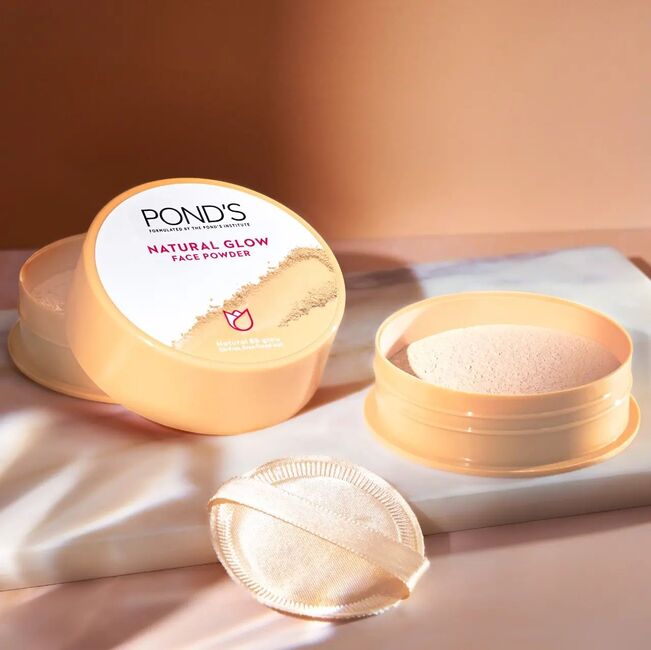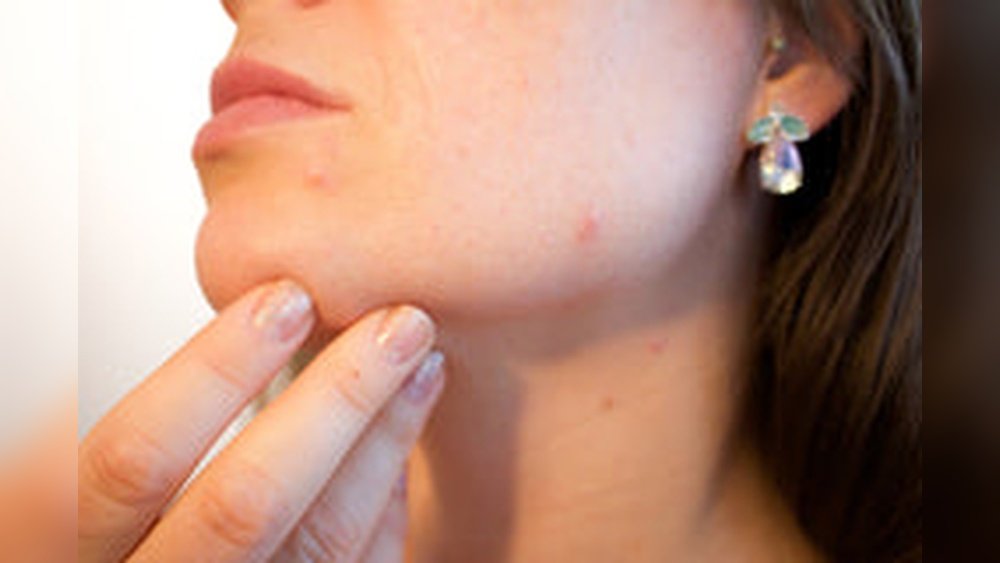Are you wondering if the talc in your favorite powders or skincare products could be causing those stubborn breakouts? You’re not alone.
Many people notice redness, irritation, or new pimples after using talc-based products and ask, “Does talc cause breakouts? ” Understanding how talc interacts with your skin is key to keeping your complexion clear and healthy. You’ll discover why talc might clog your pores, trigger dryness or irritation, and what safer alternatives you can choose to protect your skin.
Keep reading to find out if talc is really the hidden culprit behind your skin troubles—and what you can do about it.
How Talc Affects Skin
Talc is a mineral powder commonly used in cosmetics and personal care products. It helps absorb moisture and reduce friction on the skin. Despite these benefits, talc can have negative effects, especially for sensitive or acne-prone skin. Understanding how talc interacts with the skin is important for making safe choices.
Talc’s fine particles may block pores, trapping oil and bacteria. This blockage can lead to clogged pores and breakouts. People with oily or acne-prone skin might notice more pimples after using talc-based products.
Clogged Pores And Acne
Talc particles are very small and can settle deep into pores. This can block the natural flow of oil and sweat. The blockage creates a perfect environment for bacteria to grow. As a result, acne and blackheads may appear or worsen. Talc can be a trigger for new breakouts, especially on the face and body.
Skin Dryness
Talc absorbs moisture from the skin. While this can reduce sweat, it can also strip away natural oils. Over time, this leads to dryness and rough patches. Dry skin is more prone to flaking and irritation. For people with already dry skin, talc might make the condition worse.
Irritation And Allergic Reactions
Some individuals have sensitive skin that reacts to talc. Redness, itching, and rashes are common signs of irritation. Talc can be especially harsh in skin folds where moisture builds up. Allergic reactions may also develop, causing discomfort and inflammation. Those with eczema or dermatitis should be cautious.
Safety And Contamination Concerns
Talc can sometimes be contaminated with asbestos, a harmful substance. Asbestos exposure is linked to serious health problems. Cosmetic talc is tested to reduce this risk, but contamination is still possible. Inhaling talc particles may also cause lung issues, though this is less related to skin health.
Talc And Acne Breakouts
Talc is a common ingredient in many skincare and cosmetic products. It gives products a smooth, silky feel and helps absorb moisture. People often wonder if talc can cause acne breakouts.
Acne happens when pores get clogged with oil, dead skin cells, or bacteria. Talc particles are very fine and can sometimes block pores. This blockage can trap oil and dirt, leading to pimples or blackheads.
How Talc Can Clog Pores
Talc is a powder that sits on the skin’s surface. If it mixes with sweat and oil, it can form a thick layer. This layer may block pores and stop the skin from breathing properly. Blocked pores often lead to breakouts.
Skin Irritation From Talc
Some people have sensitive skin that reacts to talc. It can cause redness, itching, or small bumps. Irritated skin is more likely to develop acne. Talc may worsen existing skin problems like eczema or dryness.
Is Talc Safe For Acne-prone Skin?
Not all talc products cause acne. The risk depends on your skin type and product formulation. Some talc powders are specially made to be non-comedogenic, meaning they don’t clog pores. Always check labels and test products carefully.
Risks Of Talc Contamination
Talc is a mineral used in many skin products. It often helps absorb moisture and reduce shine. Despite its benefits, talc can carry risks due to contamination. These risks can affect skin health and overall safety.
Contamination happens when talc mixes with harmful substances during mining or processing. This can lead to skin irritation or more serious health issues. Understanding these risks helps you make safer choices for your skin.
Asbestos Contamination Risk
Asbestos is a dangerous mineral sometimes found near talc deposits. Talc can become contaminated with asbestos during mining. Asbestos exposure can cause lung problems and cancer. Cosmetic talc is tested to avoid asbestos, but small amounts may still be present. Using talc products with asbestos raises health concerns.
Skin Irritation And Allergic Reactions
Contaminated talc can irritate the skin. Some people may develop redness, itching, or rashes. Sensitive skin reacts more strongly to impurities in talc. These reactions can worsen acne and other skin issues. Avoiding contaminated talc helps keep skin calm and healthy.
Inhalation Hazards
Talc powder can become airborne and be inhaled. Breathing in talc dust may harm the lungs. This risk is higher for children and people using loose powders. Inhalation of contaminated talc could lead to respiratory problems. Many brands now use safer alternatives to reduce this risk.

Credit: organicmake.com
Alternatives To Talc In Skincare
Many people choose talc-free skincare to avoid clogged pores and irritation. Talc alternatives offer gentle options that keep skin fresh and dry. These ingredients provide similar benefits without the risks linked to talc.
Using talc alternatives can help reduce breakouts and dryness. They suit sensitive skin better and are often safer for daily use. Here are some popular talc substitutes found in skincare products.
Cornstarch: A Gentle Absorbent
Cornstarch is a natural powder that absorbs moisture well. It feels soft on the skin and does not clog pores. Many baby powders and facial products use cornstarch instead of talc. It helps keep skin dry without irritation.
Kaolin Clay: Mild And Purifying
Kaolin clay gently cleanses and absorbs excess oil from the skin. It is less drying than other clays, making it suitable for sensitive types. Skincare products with kaolin clay help reduce shine and soothe inflammation.
Rice Powder: Smooth And Lightweight
Rice powder provides a smooth, matte finish and absorbs oil naturally. It is finely milled to feel light and soft on the skin. This alternative works well in face powders and blushes for a natural look.
Mica: Silky Texture Without Harm
Mica adds a smooth texture and subtle glow to skincare items. It does not clog pores or irritate skin. Many cosmetic brands use mica to replace talc for a silky feel and matte effect.
Choosing Acne-safe Powders
Choosing the right powder is key for healthy, clear skin. Powders can help control shine and set makeup. But some powders may clog pores and cause breakouts. This section covers how to pick powders that are safe for acne-prone skin.
Understanding ingredients and skin type can guide better choices. Look for powders that keep skin fresh without irritation.
Check For Non-comedogenic Labels
Non-comedogenic powders do not block pores. These are ideal for acne-prone skin. Many brands now clearly label products as non-comedogenic. This helps avoid powders that can cause breakouts.
Prefer Talc-free Powders
Talc can clog pores and irritate skin. Talc-free powders use alternatives like cornstarch or rice powder. These ingredients absorb oil without causing dryness or irritation. Choosing talc-free reduces the risk of acne flare-ups.
Look For Soothing Ingredients
Powders with calming ingredients like aloe vera or chamomile help reduce redness. Such powders support sensitive and acne-prone skin. They soothe irritation while providing a smooth finish.
Test Before Full Use
Always do a patch test on a small skin area. Watch for any redness or bumps. Testing helps avoid widespread breakouts. Start using new powders gradually to see how skin reacts.

Credit: organicmake.com

Credit: ponds.in
Frequently Asked Questions
Why Is Talc Bad For Skin?
Talc can clog pores, causing breakouts and dryness. It may irritate sensitive skin and sometimes contains harmful asbestos.
What Powders Are Acne Safe?
Acne-safe powders include cornstarch, rice powder, kaolin clay, mica, and mineral-based powders like bareMinerals Mineral Veil. Avoid talc, which can clog pores and irritate skin. Choose non-comedogenic, lightweight formulas designed for sensitive or acne-prone skin.
Is Talc Ok For Sensitive Skin?
Talc can irritate sensitive skin by clogging pores and causing dryness or redness. Choose talc-free powders for safer use.
Why Is My Powder Breaking Me Out?
Your powder may break you out by clogging pores, causing irritation, dryness, or allergic reactions, especially if it contains talc.
Does Talc Cause Acne Or Breakouts?
Talc can clog pores, which may lead to acne or new breakouts, especially on oily skin.
Why Is Talc Bad For Sensitive Skin?
Talc may cause redness, itching, or rashes in sensitive skin due to irritation.
Can Talc Worsen Existing Skin Conditions?
Yes, talc can dry out skin and worsen conditions like eczema or dermatitis.
Conclusion
Talc may cause breakouts by clogging pores and irritating skin. People with sensitive skin should be cautious when using talc products. Choosing alternatives like cornstarch or clay can reduce risks. Always check product ingredients to avoid irritation or dryness. Taking care of your skin means knowing what works best for you.
Simple changes can prevent unwanted breakouts and keep skin healthy.
 Skip to content
Skip to content 